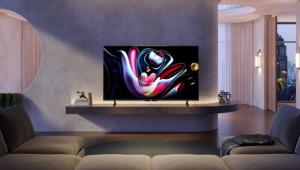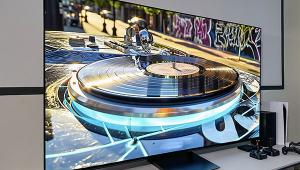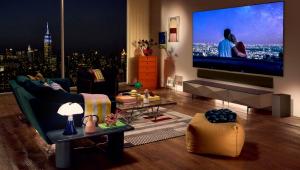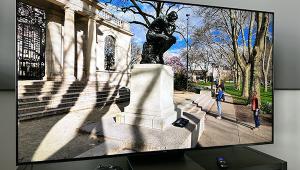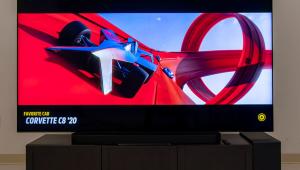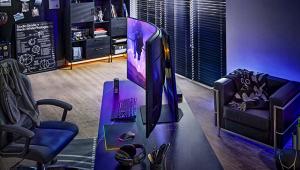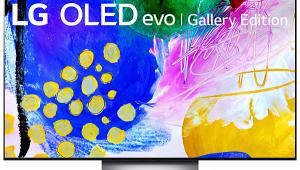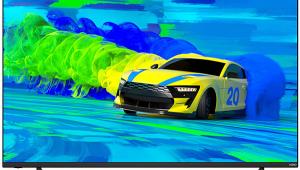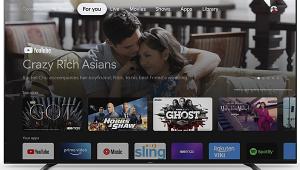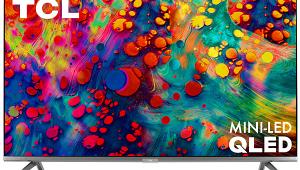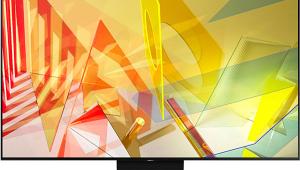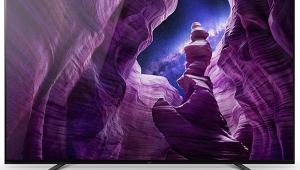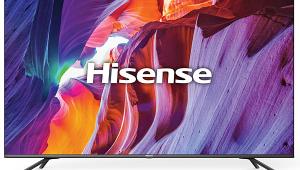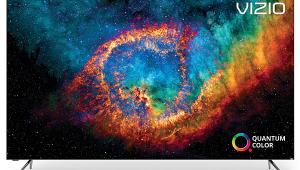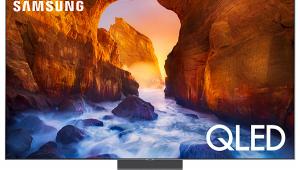On Thanksgiving day you can purchase a 75"Samsung Q80r for $2,200, or a Vizio 75P Quantum X for $2,000. These two models are direct competitors to the TCL 8 series. For $3,500 The Samsung 82"Q80r is a far better dollar value compared to $3,000 for TCL 75Q825.
Now if, TCL drops the price down to $2,000 during this weekend Holiday sale, then still buy the Samsung (Panel lottery odds are way better with the Samsung than a TCL).
TCL 75Q825 8-Series Roku LCD Ultra HDTV Review

AT A GLANCE
Plus
Super-punchy HDR performance
Class-leading local dimming
App-based picture calibration
Minus
Typical limited off-center viewing window
No VRR or FreeSync for gaming
THE VERDICT
The Chinese TV maker TCL has been rattling the budget sector for several years. But with its new 8-Series, the company has boldly entered the rarified high-end Ultra HDTV realm.
TCL made its mark worldwide over the last few years largely by selling budget sets with built-in Roku streaming. But with its new 8-Series, available in 65- and 75-inch screen sizes ($2,000 and $3,000, respectively), the company has elbowed its way into the high end and managed to do so at a highly competitive price point.
TCL flew me out to its California headquarters in mid-October 2019 to spend a day with its 75Q825 75-inch 8-Series set. While Sound & Vision rarely evaluates a TV outside of our own facilities where we have ample test gear and weeks to obsess over features and performance, the 8-Series sets were still a few weeks away from shipping, with the final firmware not yet completed. But knowing that the 8-Series would be a hot ticket during the upcoming holiday shopping season, we agreed to an offsite review.
Our Photo Research spectroradiometer is not only fragile and pricey, but larger in its protective carrying case than some airlines will allow in their overhead compartments. For those reasons, I declined to bring a meter with me on my cross-country, two-leg trip. It was just as well, since I easily burned-through my seven hours alone with the set using source material I had brought with me, including movies on Ultra HD and regular Blu-ray disc and the new Spears & Munsil Ultra HD Benchmark test disc.
Features
TCL's 8-Series models use mini-LEDs for their full-array local dimming backlight. This shouldn't be confused with microLED, a stratospherically pricey new display technology that uses microscopic LEDs acting directly as the pixels comprising the image, with no LCD panel needed. As with any LED/LCD set, the TCL's mini-LEDs still function as the backlight for an LCD panel, but they're so much smaller than conventional LEDs that TCL has managed to fit 25,000 (!) of them into the 75-inch 8-Series model. TCL calls this configuration Quantum Contrast.
Since the processing needed to independently control 25,000 mini-LED zones on an instantaneous basis isn't something that can be affordably implemented in a consumer TV, the mini-LEDs are instead arranged into a claimed 1,000 zones, with each zone comprised of 25 mini-LEDs. Although I measured just over 700 zones using the zone-counter on the Spears & Munsil disc, I will accept TCL's figure (measuring the precise number of zones can be tricky). While the local dimming is thus limited to 1,000 zones (a higher number than what's found on any other consumer LED/LCD set we know of), the extra mini-LEDs in each zone should offer a significant boost in peak brightness for HDR highlights.
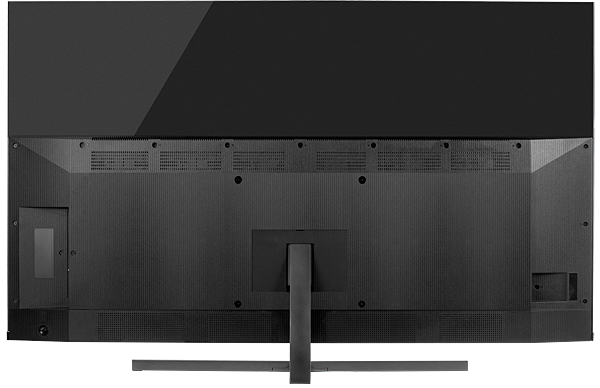
The 8-Series sets also employ Quantum Dots to achieve a broad and deep color range. TCL refers to its set as a QLED, much like another...um...set maker has done for a few years now.
The central processor on 8-Series sets is called the AiPQ Engine. Apart from its many other chores, including upscaling, the AiPQ Engine monitors each video frame and references it to a "curated library of high-quality video content to ensure delivery of maximum color accuracy and dynamic impact." But can TCL's processor distinguish between the intent of the content creator and an error in the data stream? That's a question worthy of its own separate discussion, but TCL isn't the first TV manufacturer to incorporate such a feature.
While TCL's small non-backlit remote is adequate, all of the set's color adjustments, including 2- and 10-step white balance controls and a full color management system (CMS), can only be accessed via an iOS/Android app. A separate app provides smartphone-based picture calibration that makes use of the phone's camera (currently limited to three Google models and Apple's iPhone 6 or later), though it's claimed to be accurate only above a 50 percent brightness level. Since I didn't have a meter to check results and evaluate the app's accuracy, I didn't attempt to use it.
Inputs on the 8-Series models are all HDMI 2.0, including one with HDMI ARC. The 75Q825 doesn't offer any HDMI 2.1 features such as VRR (Variable Refresh Rate) or eARC (Enhanced Audio Return Channel), though it does have ALLM (Auto Low Latency Mode), a feature that, like VRR, will primarily be of interest to gamers.
The 8-Series sets support HDR10, HLG, and Dolby Vision high dynamic range, but not HDR10+. Unlike some other Ultra HDTVs that convert the static metadata in an HDR10 source to dynamic metadata on a scene-by-scene basis via their own internal processing, the 8-Series sets rely on the existing static metadata in HDR10 sources.
Audio on the 8-Series TVs is specified as Dolby Atmos. Call me a skeptic regarding the ability of any audio system contained within the TV itself to do what Atmos was designed for: reproduce elements in the soundstage from all around the listener, especially from above. But I didn't spend any time evaluating the TCL's audio since the acoustics of the company's test room weren't typical of a home environment.
Ultra HD/High Dynamic Range Performance
Most of my time with the 75Q825 was spent evaluating its performance with Ultra HD/HDR in a darkened room. Only the last hour or so was devoted to viewing regular high-def, so all comments here refer to HDR unless otherwise stated. TCL provided an Oppo UDP-203 UHD Blu-ray disc player to use for my testing. Because of the time limitations, I didn't evaluate the set's streaming capabilities via its well-regarded Roku interface.
TCL's TV brightness control isn't a classic brightness adjustment (there's a dedicated Brightness setting for that), but rather a five-position control similar in function to the set's separate, continuously variable Backlight control. TV Brightness options include Brightest, Bright, Normal, Dark, and Darkest. When I arrived, the 75Q825 was set to Brightest, but this setting made highlights look a little harsh in a fully darkened room, which suggests that the set might be pushing the luminance to higher levels than the standard specified for proper adherence to the PQ curve (gamma in the HDR world). Normally such deviations can be determined through measurements and sometimes mitigated by small changes to the Contrast and/or Backlight controls. Lacking a meter, however, I simply changed the TV Brightness control setting to Normal. This helped significantly while only slightly reducing the peak brightness available on HDR highlights.
- Log in or register to post comments


It's exciting to see more options in the high-end HDTV space! But how much does a concrete patio cost?

https://www.charlottedrywallpros.com is impressed on how TCL, known for budget sets, is making a bold move into the high-end Ultra HDTV market.

This article really helped me decide which Roku model to choose for my office over at https://centuryelectricalservices.com/

I came across this detailed TV review, and while high-end features like HDR performance are impressive, I’m more intrigued by other online finds. For instance, 22bethu-app offers a completely different kind of entertainment experience that’s both exciting and accessible. It’s perfect for anyone looking to unwind and have fun, all while enjoying the comfort of home.


